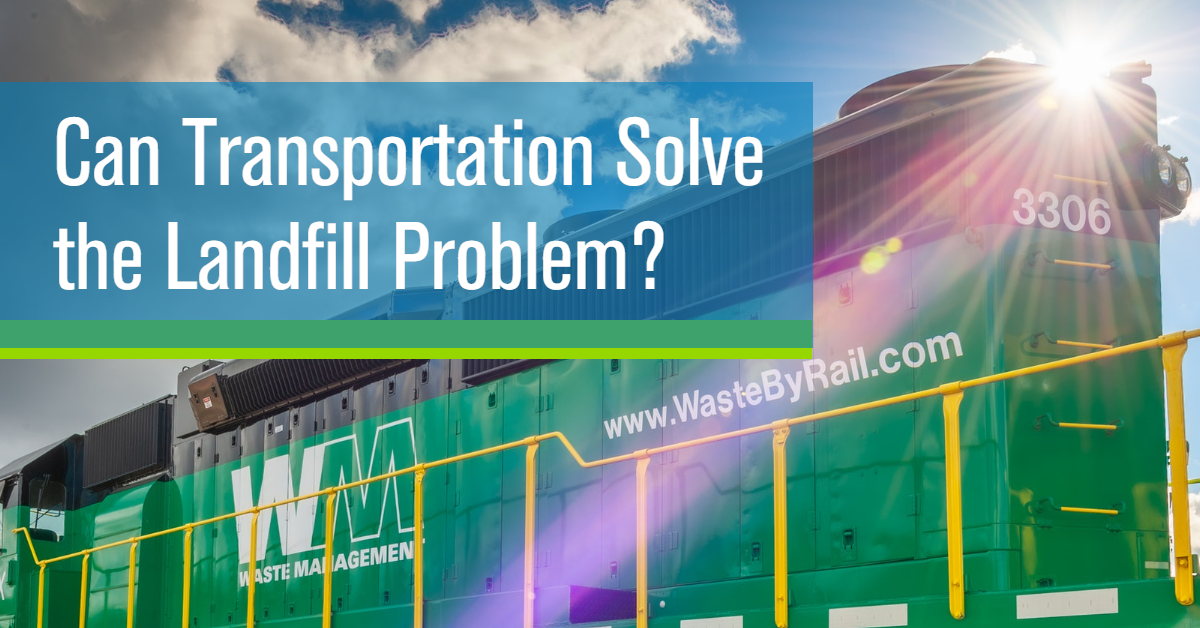Cities are growing. As populations increase, so do the challenges related to municipal solid waste. At the same time, many of these growing communities are running out of space in nearby landfills — and establishing new ones nearby isn’t a viable option.
While this is a growing problem, it is not a new one. The City of Seattle faced this very challenge more than three decades ago. Thanks to Waste Management and Union Pacific Railroad, they found an environmentally friendly and cost effective solution — a model other growing communities can follow.
Managing Waste for Communities in Western Washington
The landscape of Western Washington alone could draw a person to it, with mountains, forests, beaches, national parks and numerous islands all within arm’s reach. Add in the allure of the music, arts, cuisine and culture of Seattle, and it’s no wonder Western Washington is home to 5,229,486 of the state's 6,724,540 residents.
A growing population means more waste, even for cities such as Seattle, where the waste reduction and recycling culture is deeply rooted and sustained through award-winning programs to educate and engage community members. Fortunately, there are landfills in the region designed to serve multiple communities for the long-term — hundreds of years into the future.
The issue is that the large regional landfills are in rural areas. So how can communities in Western Washington take advantage of landfills located more than 100 miles away? A collaboration between Waste Management (WM), Union Pacific Railroad and the City of Seattle yields the answer.
In 1991, the three entities designed a strategy to ship the City of Seattle’s solid waste by rail to Columbia Ridge Landfill in Arlington, Oregon, which is located just south of the Washington-Oregon state line. “To move waste long distances, rail transport makes sense for local governments because they want the greenest option with the lowest emissions and one that does not add to traffic congestion,” said Rob Jones, Director of Transportation & Recycling Operations, Waste Management, North America’s leading provider of comprehensive waste management and environmental services.
Thirty years later, this serves as an innovative model for other communities in need of landfill space for their municipal waste. “Municipalities across the U.S. have similar goals and objectives to provide their communities with safe, reliable and cost-effective solid waste management services,” Jones said. “Rail can offer a safer, greener alternative than shipping by truck. Using rail, we move large volumes of material cost effectively, with a lower carbon footprint. Rail also reduces truck traffic on public highways.”
Today, Waste Management and Union Pacific are using a similar model with Kitsap County, Washington, to ship solid waste by rail to Columbia Ridge in Arlington. In 2020 alone, Union Pacific shipped more than 2 million tons of waste from the greater Puget Sound area to Columbia Ridge — the equivalent of removing 75,000 trucks from the state’s roadways and reducing greenhouse gas emissions by 11,000 tons each year.
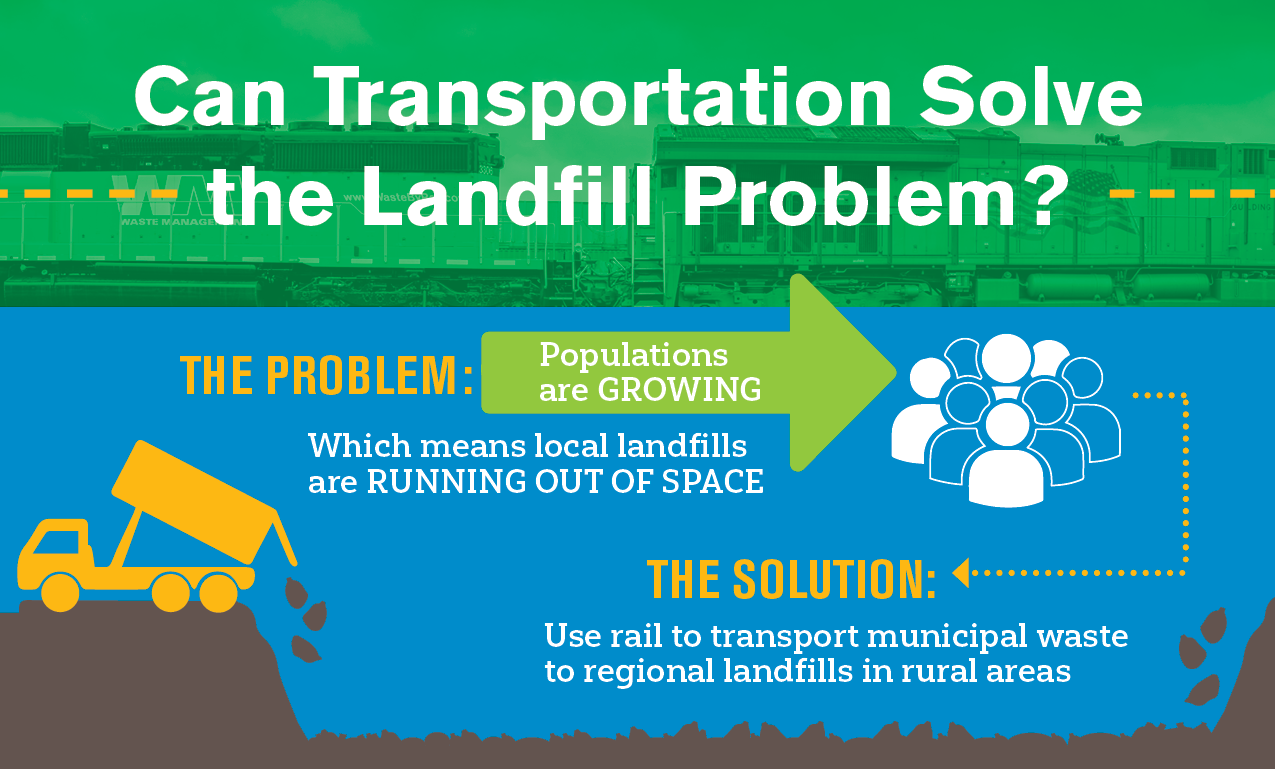
How Does Shipping Waste by Rail Benefit a Community?
Shipping waste by rail can help communities address the long-distance challenges they face in transporting waste to regional landfills. But it also comes with a number of other advantages.
- Rail Can Be the Most Efficient Way to Ship Waste
A single rail car can carry up to six trucks worth of waste, making it simpler to move large quantities at one time. Communities that ship waste by rail can ship just a few rail cars at a time or can ship an entire train’s worth of waste.
- Rail Reduces Roadway Congestion
Just one train can take more than 300 trucks off the road, making a noticeable difference in truck traffic. Multiply that number over a year’s worth of shipments and the impact is significant. The result is reduced congestion on overcrowded highways, less wear and tear on bridges and roadways, and a lessened burden on the taxpayers who pay to maintain them.
- Trains Can Offer a More Environmentally Responsible Way to Ship Waste
On average, railroads are three to four times more fuel efficient than trucks on a ton-mile basis and can move one ton of freight more than 480 miles on a single gallon of fuel. Railroads typically generate a carbon footprint up to 75% less than trucks, making trains a more environmentally responsible shipping mode.
According to the Association of American Railroads (AAR) Freight Railroads & Climate Change Report, if 10% of the freight shipped by the largest trucks were moved by rail instead, greenhouse gas emissions would fall by more than 17 million tons annually. That’s the equivalent of removing 3.35 million cars from our highways or planting 260 million trees.
“Rail can provide a viable, long-term solution for moving solid waste, while helping communities reach their sustainability goals,” Jones said.
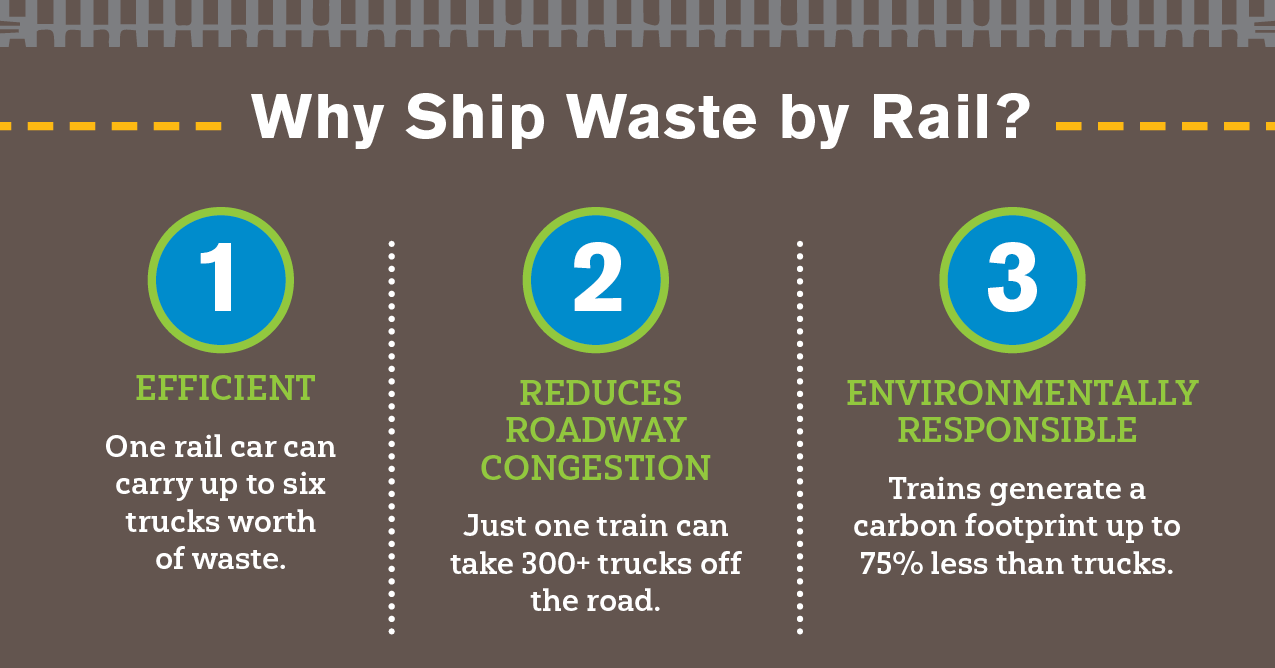
Steps Communities Can Take to Address Landfill Challenges
For communities facing landfill challenges similar to those in Western Washington, taking the following steps can help find a solution that is most beneficial to the community and the environment.
- Make a plan. “Having a purposeful plan is important,” Jones said. “This includes defining environmental goals and consulting with experts like WM to understand how best to reach your goals.”
- Collaborate. Communities can find solutions they may not have considered otherwise. Waste Management’s experience with residential, commercial, industrial, and municipal customers can help communities find the best way to achieve their goals. “We join with our customers and the communities we serve to manage and reduce waste at each stage from collection to disposal, while recovering valuable resources and creating clean, renewable energy,” Jones said. “WM works closely with our communities to tailor services to meet their needs, which in some markets requires the need for rail service.”
- Consider rail. Shipping waste by rail can help communities transport to landfills efficiently and safely, while also simplifying logistics, improving community safety and reducing their carbon footprint.
- Engage the community. “Community engagement is a must,” Jones said. “Sustainability objectives can only be achieved when everyone works together.”
Jones said WM welcomes the opportunity to discuss municipal environmental service needs. “Together we can review communities’ goals and evaluate available solutions,” he said. “WM offers a wide range of solutions to help green every community — safely, efficiently and sustainably.”
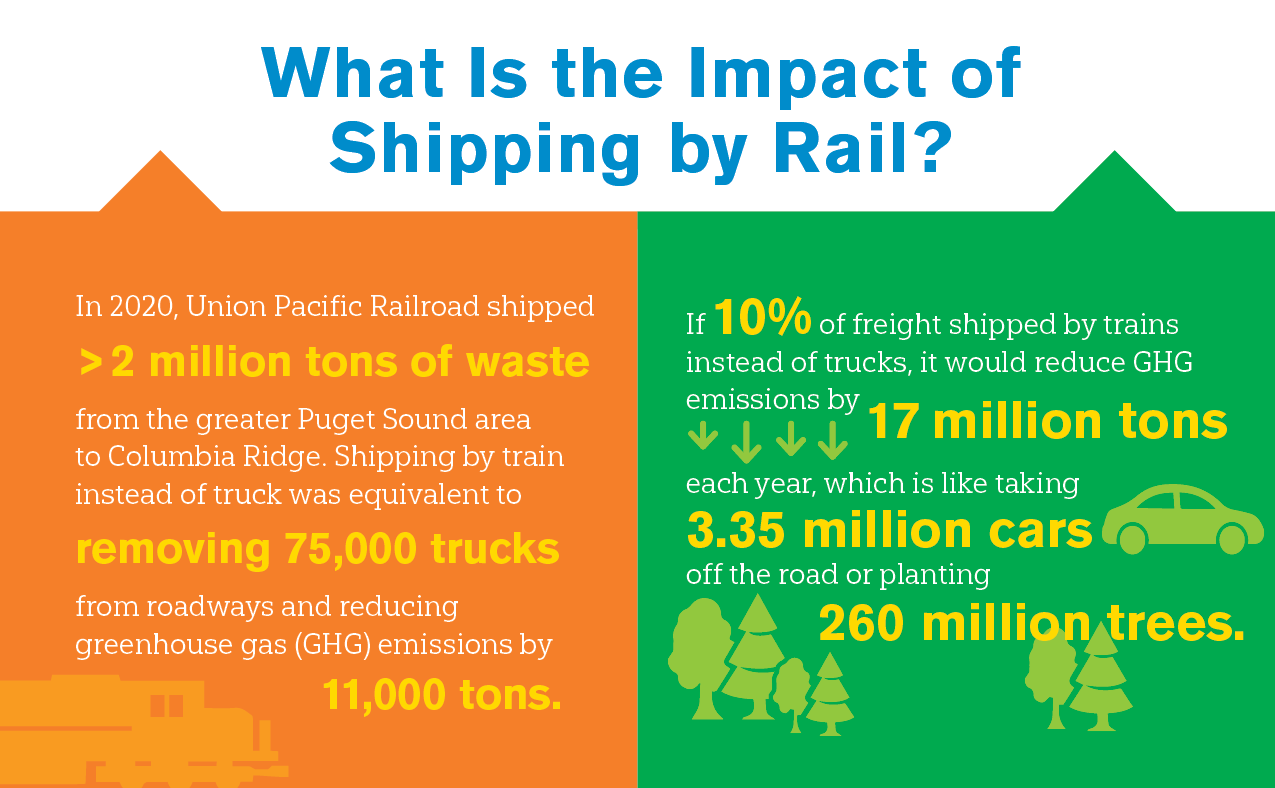
Learn More

To learn more about how Waste Management can assist your community, visit wm.com or contact Rob Jones at rjones40@wm.com. Or, to learn more about shipping waste by rail, get in touch.
Related Articles
- Rail: An Environmentally Responsible Way to Ship
- The Rail Industry Is Saving Millions of Gallons of Fuel a Year – And They’re Using “Cruise Control” to Do It
- Transportation Modes Revealed: A Comprehensive Look
- Plastics and Sustainability: How Dow and Braskem Are Working Toward a Greener Future
- From Steam to Green: The Evolution of the Locomotive
- Rail 101 FAQs
- Quiz: Is Rail the Right Fit for Your Shipments?
"Can Transportation Solve the Landfill Problem?" Infographic
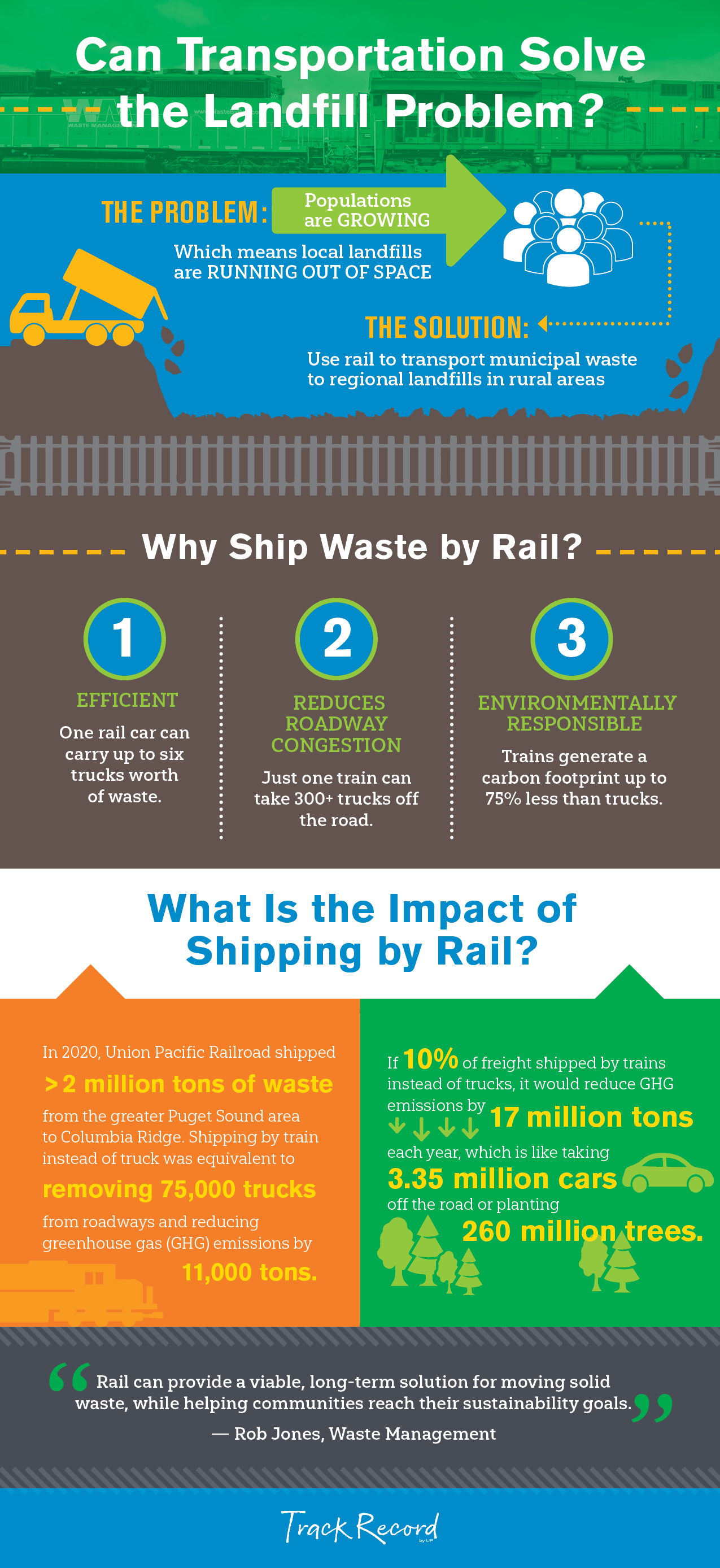
Download a printer-friendly PDF

